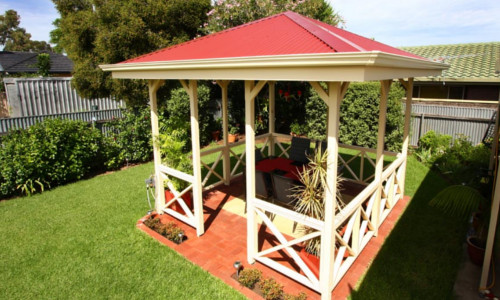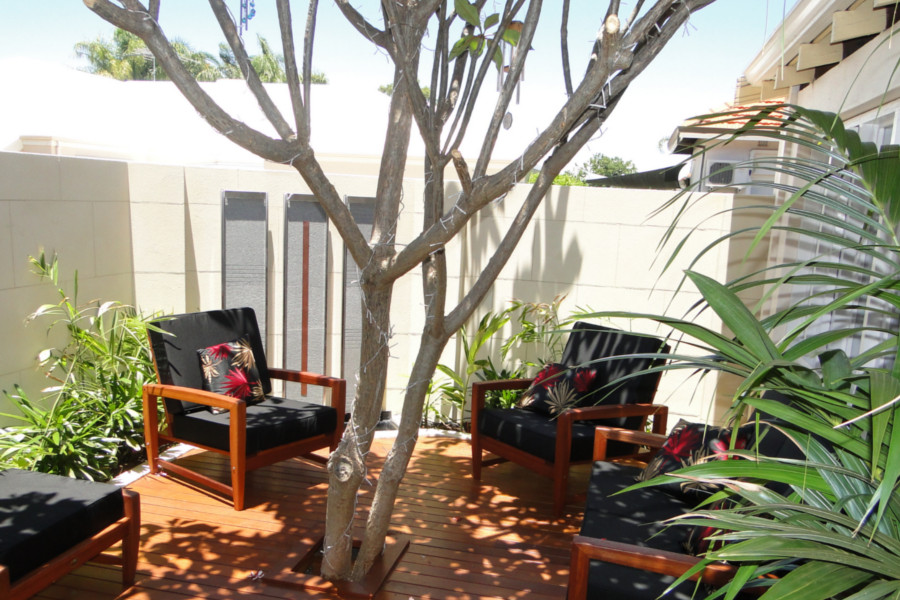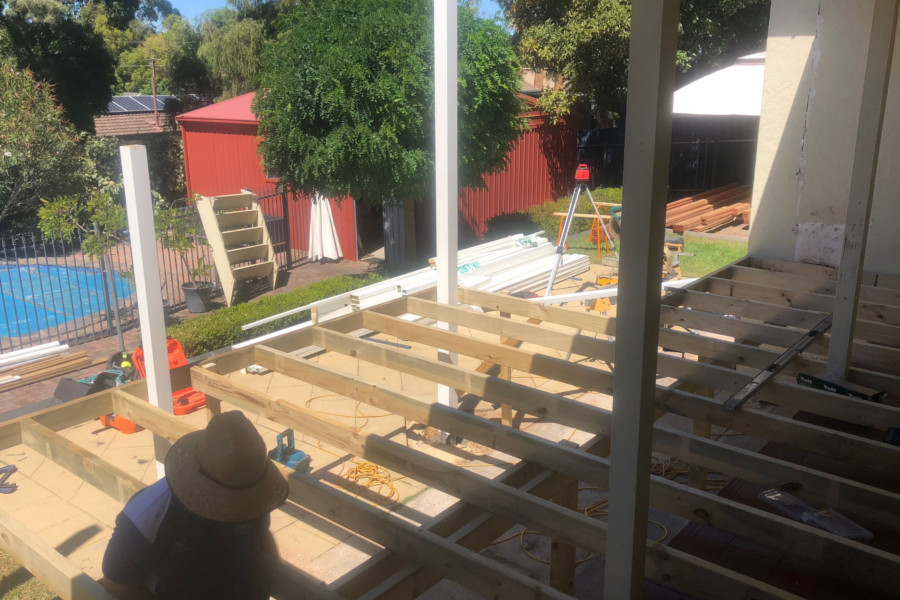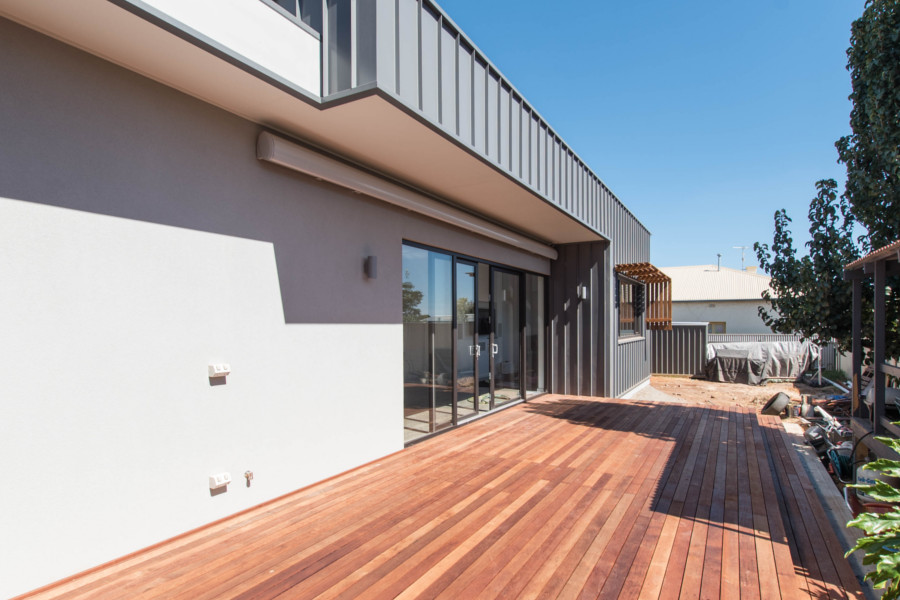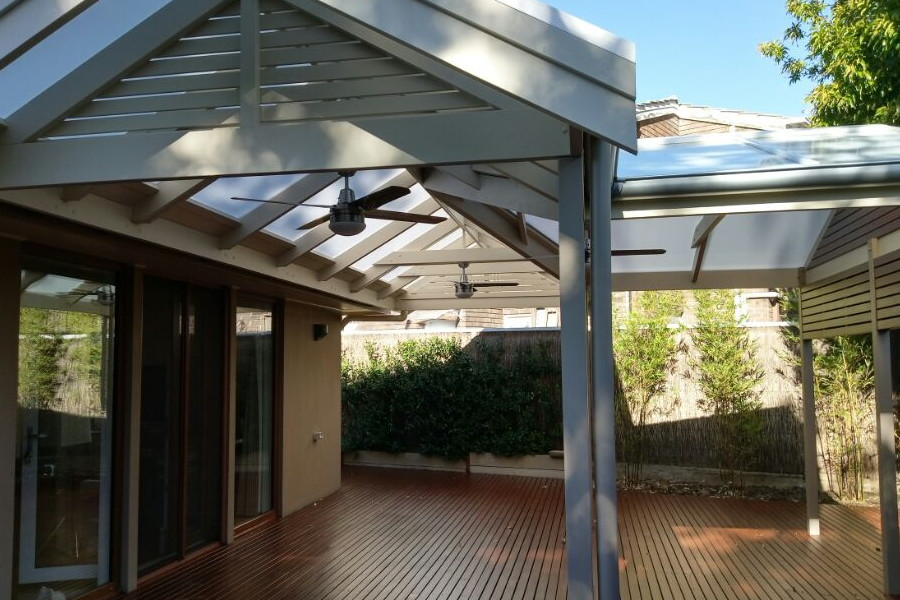
The pergola, handed down to us from way back during the Renaissance period, is a relatively simple structure. But it’s surprisingly multifaceted and versatile, as you’ll see from this sampling of projects we have done for our customers.
Attached or Detached?
A pergola may be built attached to the main house, as in the following example. An attached pergola is often an extension of the home and therefore will often feature the same design elements as that found in the main house. It serves as a gentle interface between the comfort of the indoors and out
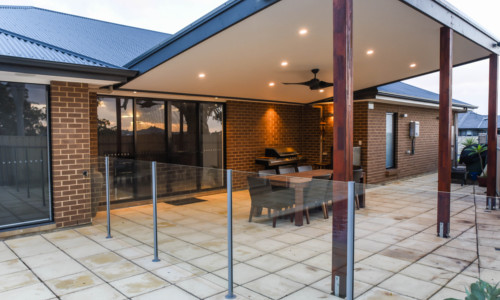
Or it may be detached, built independently of and some distance from the house, as seen in the picture below. A detached pergola is a standalone structure and so may or may not feature the main house’s design elements.
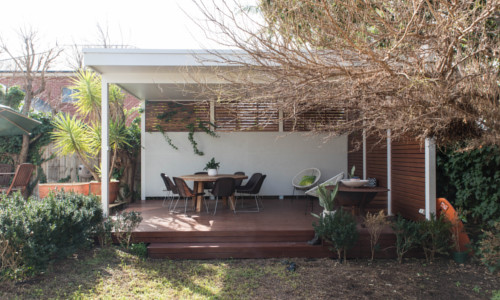
How Much Shade Do You Want?
The traditional pergola, as handed down from the Renaissance period of Western European history, consisted of nothing more than timber beams and rafters running atop timber posts. You may think that while this design does provide some shade, it really doesn’t provide much. The Italians thought the same thing, and so what they did was plant leafy climbing plants and vines which they trained to run across the rafters. The resulting foliage added to the shade the pergola was able to provide, with the added bonus of naturally beautifying the structure during the spring when the vines would bear flowers. The example below follows the same approach. Tie wires have been placed across the top, and these will provide the foundation for vines to anchor themselves.
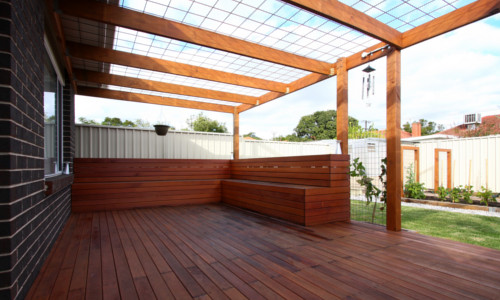
Taking care of plants and training them on the pergola may not be your thing, or you may want more significant overhead cover. A roofed pergola will probably be more to your liking. Polycarbonate roofing sheets, such as in the example below, come in various degrees of opacity to let in as much (or as little) of the sun as you want while at the same time keeping out harmful UV rays.
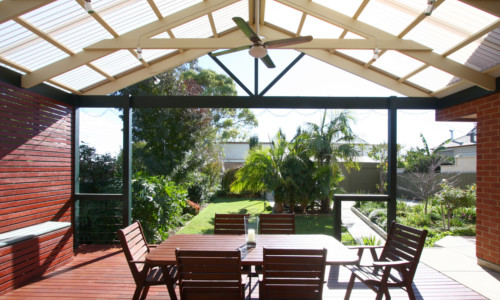
But if you feel polycarbonate protection isn’t enough, get maximum shade from steel roofing sheets. The next example shows just that, and includes a timber lined ceiling that provides added insulation from the heat while at the same time contributing to the pergola’s visual appeal.
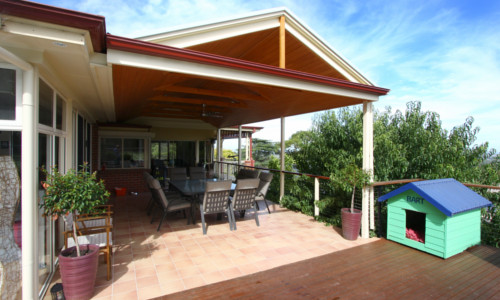
The Fortress of Solitude
Outdoors there is always the inevitability of being seen, and that’s okay — unless it’s not! Some slatted timber screening takes care of this, and the pergola becomes the perfect place for some relaxing privacy.
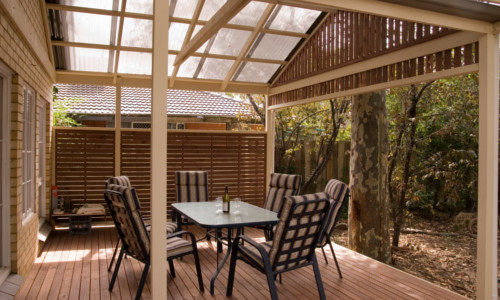
The good thing is that you can decide how much privacy you can have. Screen off as much of the pergola as you want. The slatted timber ensures proper ventilation, regardless, and you still get to see the surroundings, somewhat.
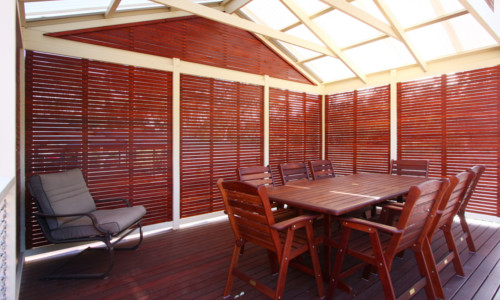
The Entertainer
The star of the show, in as far as entertaining guests, is the pergola. It’s simply the natural setting of any intimate get-together or lively party.
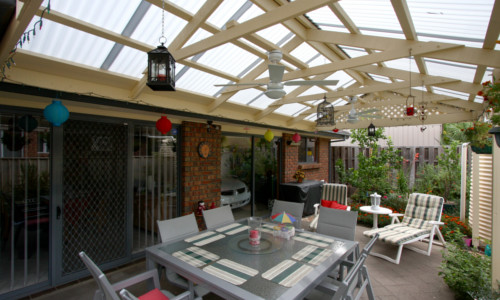
You simply adorn the space with the trappings you need — a dining table, some chairs, comfortable seating and whatever else will make it comfortably delightful. Dining tables are a must if you expect to have loads of guests over and plan on feeding them. Additional seats let the guests break off into smaller groups for side conversations.
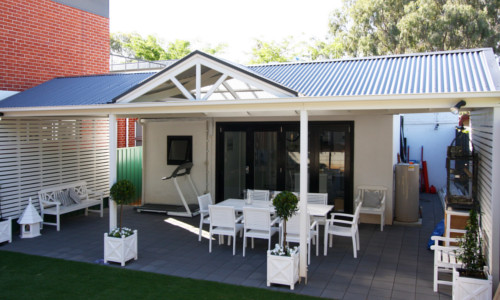
A barbecue is a must-have especially during the summer. Polycarbonate roofing in the example below lets in loads of natural sunlight that keeps the pergola bright full of energy. But if you want the happy hours to stretch until after the sun sets you’ll need to install some lighting.
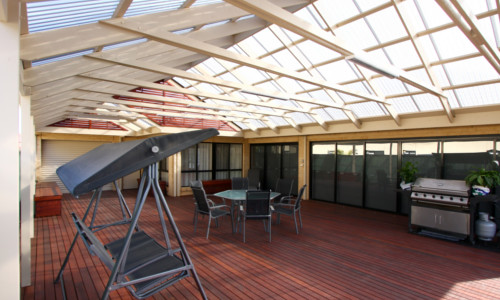
Whatever the reason, whatever the season, a pergola ensures an active social life for you, rain or shine.
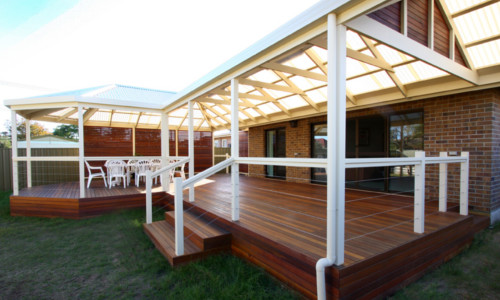
The Garden of Delights
Just because the pergola reclaims part of your yard doesn’t mean that it denies you a place in which to plant your garden. It could, in fact, even be an improvement especially when the area you build it on is rocky or on a slope or not suitable for planting a garden for whatever reason.
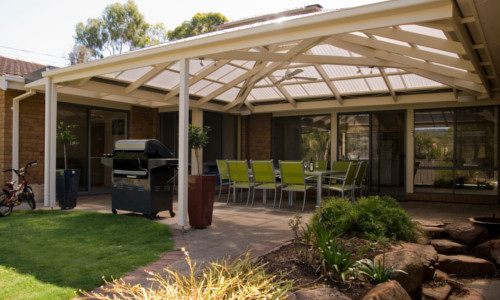
Plant flowers and ornamentals in pots and containers, then take these into the pergola and you have yourself an indoor garden (an indoor/outdoor garden, to be exact). And you can arrange the garden any way you wish, anytime.
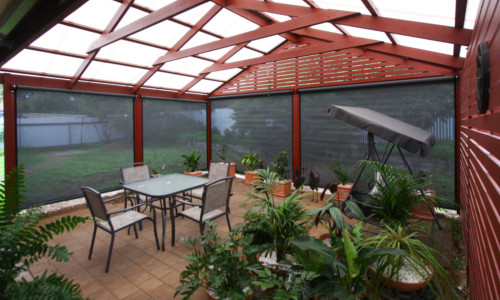
The pergola also acts as a frame; in the same way a picture frame draws your focus to an artwork and contributes to your enjoyment of the art piece, a pergola creates a pleasant visual experience of the garden surrounding it.
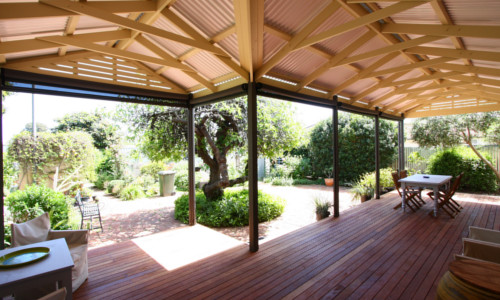
Imagine yourself sitting underneath the pergola on a beautiful day, gazing out at your garden. There! Can you feel your blood pressure normalising and your stresses melting away?
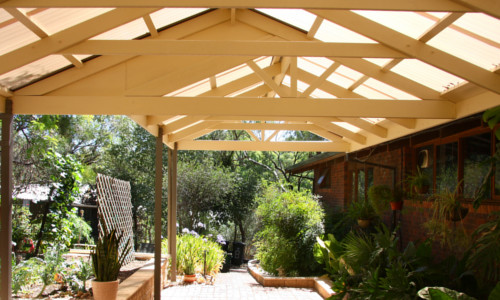
The Poolside Partner
The pergola and your swimming pool are perfect partners. The pergola complements your pool not only in terms of aesthetic appeal but also in functionality. It’s a great starting point from where you launch your aquatic adventures, providing a place where you and your friends and family can gather and prepare before going out for a swim.
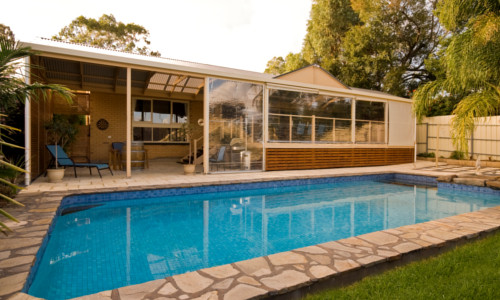
Then when you need a respite from the water you and your guests can easily climb back out of the pool and into the pergola for a break. You’ll have shade to protect you from the sun and a great venue for snacks, games and conversation.
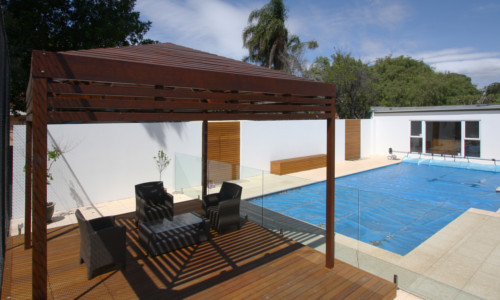
The Carport
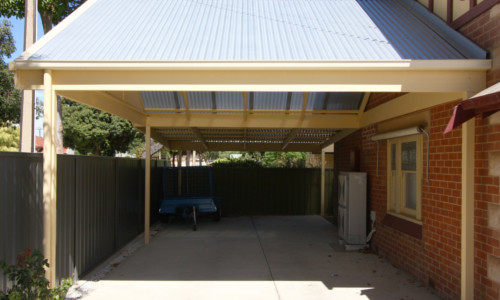
When you think about it, a carport is technically a pergola built for a specific purpose: to protect your vehicle from the elements. But nothing stops you from using the carport as you would a pergola. Of course, you’ll have to clear up the space afterwards so you can bring the car back in.
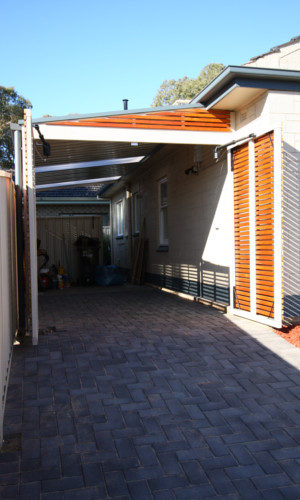
The Landscape Accessory
A pergola is a thing of beauty and this is most evident when it sits in your backyard. It adds a strong aesthetic element to your property; that’s why a property’s value rises when a pergola is built there.
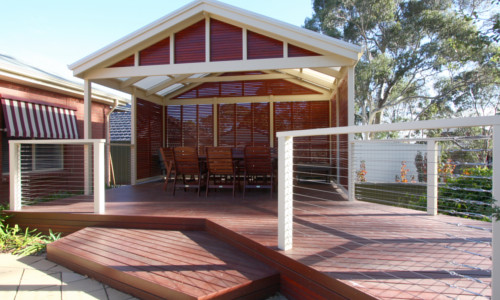
The pergola provides a focal point for the yard and increases the property’s desirability, since the owner can look forward to a delightful private space to escape to from the pressures of life.
